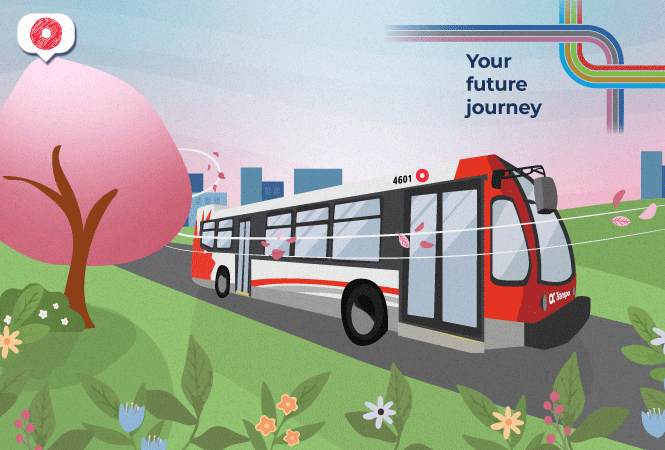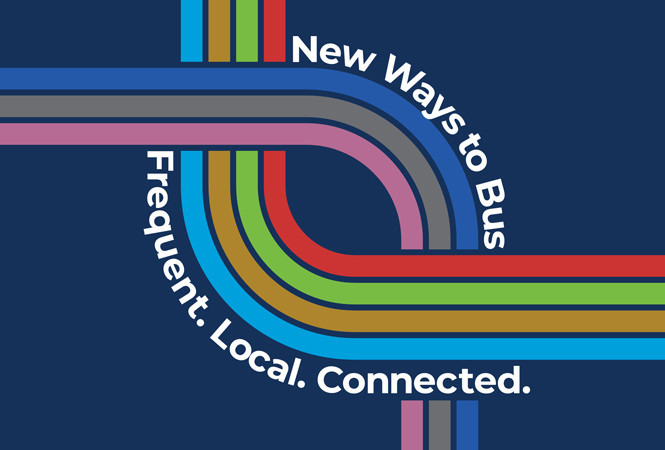OC Explained: Service Changes

As part of our Your Future Journey blog series, we’re exploring the New Ways to Bus network which will be focused on frequency, local service, and connections to key destinations across the city.
While this is a major change that will take advantage of our expanded rail network, our bus network is no stranger to change. We are constantly recalibrating the network to match travel needs and seasonal ridership trends.
Come behind the scenes to understand our service change process. It’s an ongoing cycle of monitoring, planning, scheduling, and assigning operators, vehicles and other front-line staff in a way that provides the best possible service for our customers.
What’s a service change?
Simply put, a service change is a date when our bus network is modified based on travel patterns, customer feedback, and operating conditions and requirements. The service change process allows us to:
- Bolster popular routes
- Scale back routes that are experiencing lower demand than usual
- Introduce transit service to new neighbourhoods and growing areas
- Make modifications to existing service based on feedback or operational requirements
There are four service changes every year: spring, summer, fall and winter. While a service change may just be a date on a calendar to some, the final result is only the tip of the iceberg.
A service change is planned months, and sometimes years in advance as was the case when planning detours during O-Train construction. It all starts with gathering data and forecasting future travel demands.
Creating a plan
On a typical day, we have approximately 550 to 600 buses on the road serving more than 172 routes and 5782 stops. With the help of nearly 1400 operators, we deliver over 8200 bus trips per day. All these resources are carefully allocated to a specific plan that typically remains in place for two to four months.
Planning bus service begins months in advance and takes into consideration several factors such as major events, operating conditions and feedback received throughout the year:
- Customer feedback received online or via our customer service channels
- Councillors who share comments received from their residents
- Transit operations staff such as supervisors and superintendents
- Bus operators who have submitted service improvement requests or shared comments at scheduling clinics or through working groups
- Data analysis by OC Transpo’s Service Planning team
- Field observations and run time checks
- Community and advocacy groups
- School boards and school transportation authorities
All of this information is gathered and fed back into the scheduling process to improve and update schedules and forecast our future bus network. Once this is done, we use all of the data to develop bus schedules, which includes assigning vehicles and operators to complete all necessary trips across the network.
Implementing changes
At least two months before changes take place, all of OC Transpo mobilizes on a single collective goal of ensuring the service change is seamless.
This process includes members of Service Planning, Fleet Services, Customer Service, Scheduling, Field Operations, Transit Operations Control Centre, customer communications, and much more.
OC Transpo received an award in 2017 for the planning and implementation of complex service change requirements leading up to the closure of the Transitway to prepare for the construction of O-Train Line 1.
As we get closer to the service change, meetings increase in frequency from weekly to daily or more often.
Before we can launch a service change there is a lot of work that goes on behind the scenes.
A small portion of the work includes:
- Printing new bus stop signs, schedules, and other customer signage
- Updating real-time customer information tools
- Communicating updates to customers through our website, public service announcements, and social media
- Informing bus operators and other customer-facing staff of service changes so that they can assist customers
- Depending on what changes are being made to service, the construction of new bus stops or stations
Monitoring service
We monitor ridership levels on all bus routes using an on-board automatic passenger counting system and by collecting observations from customers and front-line staff.
Ridership is actively monitored to help manage chronic crowding on routes across our transit system.
When overcrowded trips are observed, we do our best to increase capacity when possible by actively assigning a larger bus or by adding another trip if there are sufficient buses and operators available.
If ridership shifts or grows on a particular route or trip to the point of requiring additional capacity, changes are made at the next available opportunity which is typically within the next two service changes.
Throughout the process, we are gathering feedback from customers, Councillors and operational observations from front-line staff.
This process allows us to continuously provide the best possible service for our customers with the resources we have available.
For more information on how we schedule our bus routes and the work of our bus operations, check out our OC Transpo Scheduling Process report that was prepared for the April 11 Transit Commission meeting.
Your Future Journey series
Is there anything about the new bus network that you’re curious about? Reach out to us at NewWaysToBus@ottawa.ca and let us know what you’re interested in learning about. We may feature your ideas in an upcoming article!
